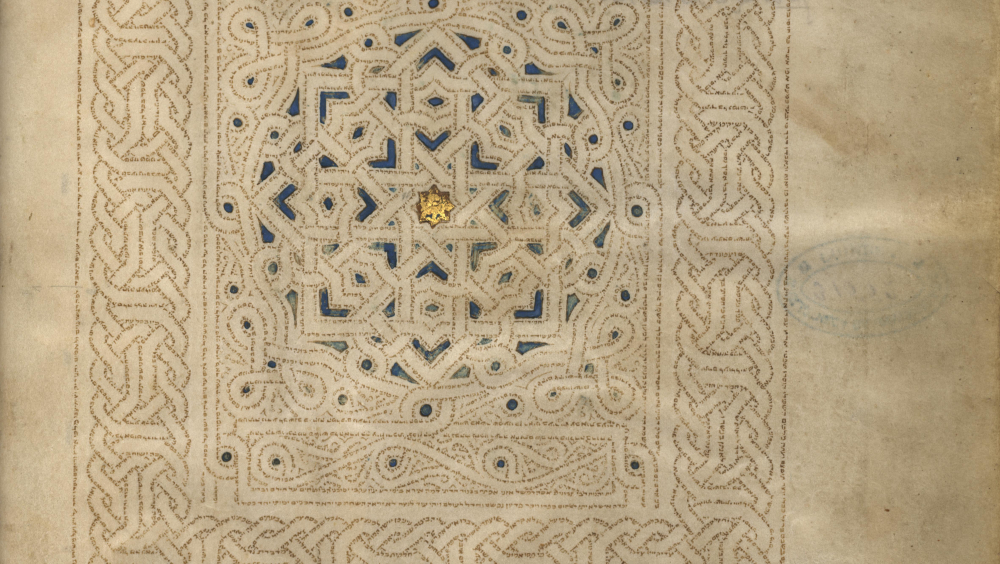Books in Diaspora
This story is about a family bible produced in the South of the Iberian Peninsula that left Portugal and was later acquired in Holland and brought back to Portugal. Sometimes referred to as “Abravanel’s bible” this Hebrew manuscript is now one of the most treasured holdings of the General Library: with its “arabesques” it demonstrates the decorative taste common to Christians, Jews and Moors in 15th century Portugal.
Libraries are the Houses of Stories, for every book can tell a story, if you know how to ask it.
The General Library of the University of Coimbra possesses a precious Hebrew manuscript, painfully calligraphed either in Seville or in Lisbon, no doubts commissioned by a very rich patron. It is a family bible in parchment, with some private notes, but no colophon, e.g. no statement of authorship, place or date of completion. Since the commissioner of such a delicate work had to be very rich, the Abravanels (bankers in Seville and Lisbon) come easily to mind, even if nothing can be provided as evidence of such ownership.
Such a rich bible was a family Treasure. The book assisted familiar rituals and was used to write down the happiest dates and familiar events. It must have left Portugal in 1496 along with its owners. Out of Portugal it escaped the flames that consumed nearly all Hebrew texts grabbed by the Holy Inquisition.
It was acquired in Amsterdam by Professor Manuel Pedro de Mello (1765-1833), and brought to Coimbra in 1815. The Inquisition was only abolished in 1821 but was weakened by Pombal’s political manoeuvres and the new juridical environment represented by Pascoal José de Mello Freire dos Reis and other Coimbra Law professors. The cycle so closes, with the bible returning to where it was (maybe) produced and most certainly used.
The routes this bible traveled also follow the history of the Sephardim community in Europe.
The Peninsula in the 15th century (where the document was produced) still was a very special place, almost the embodiment of today’s European values of tolerance and peace: the politically dominant Christians, the Jews controlling trade, business and medicine, and the Moors, farmers and artisans of all the crafts, lived alongside in good harmony. The “Moorish” influences we can spot in this bible’s decorations were fashionable in Portugal at that time and afterwards.
For Portugal this book is also a metaphor of its relations with the Sephardic community: the clear acceptance in medieval times, the expulsion in 1496 and the persecutions, finally the re-entry of refugees and the revival of Jew heritage and of crypto-Jew traditions we can see happening right now.
